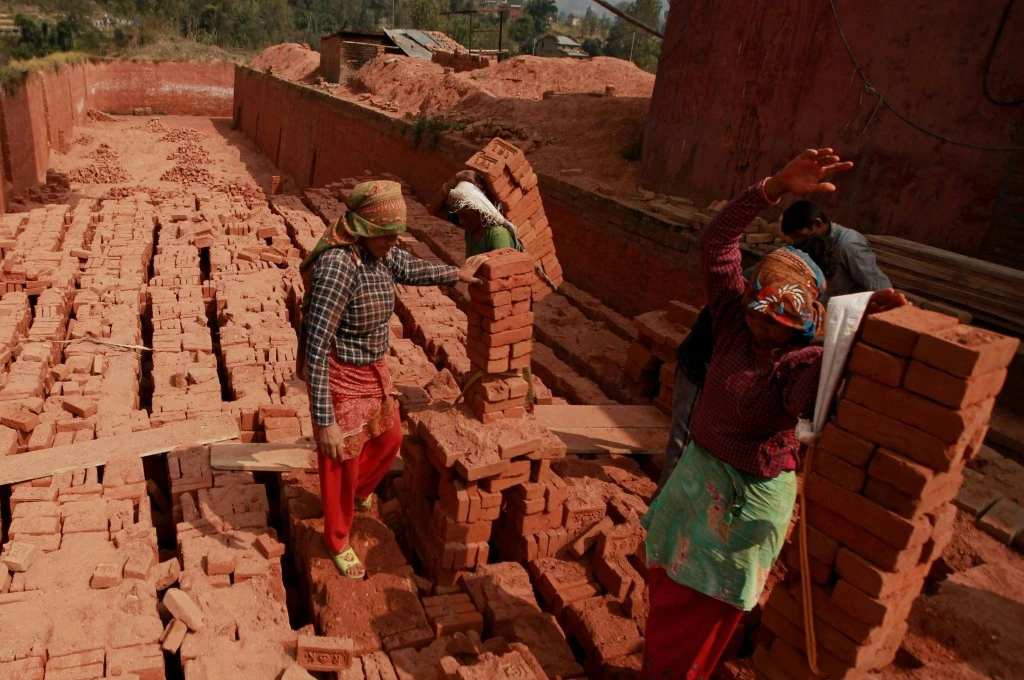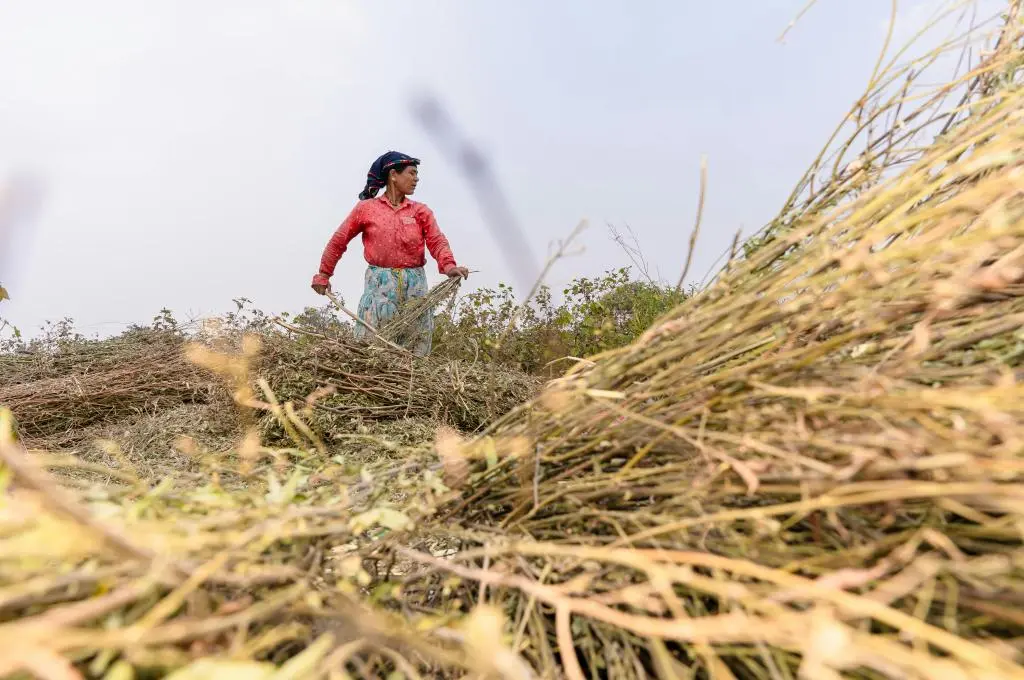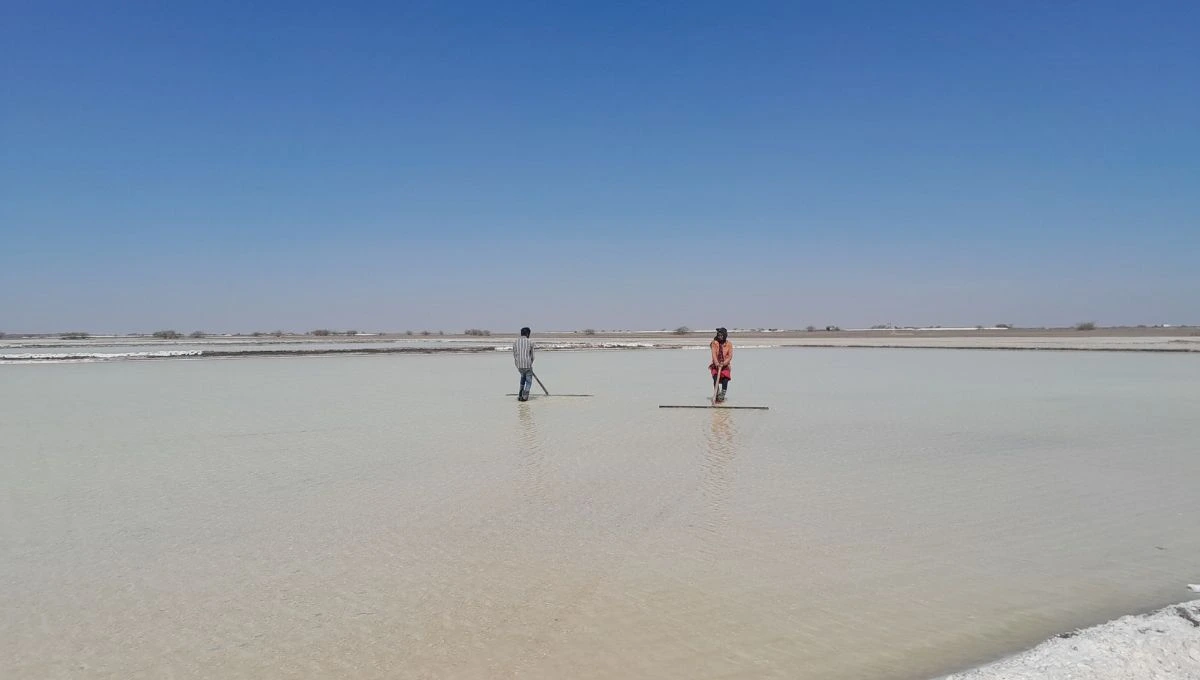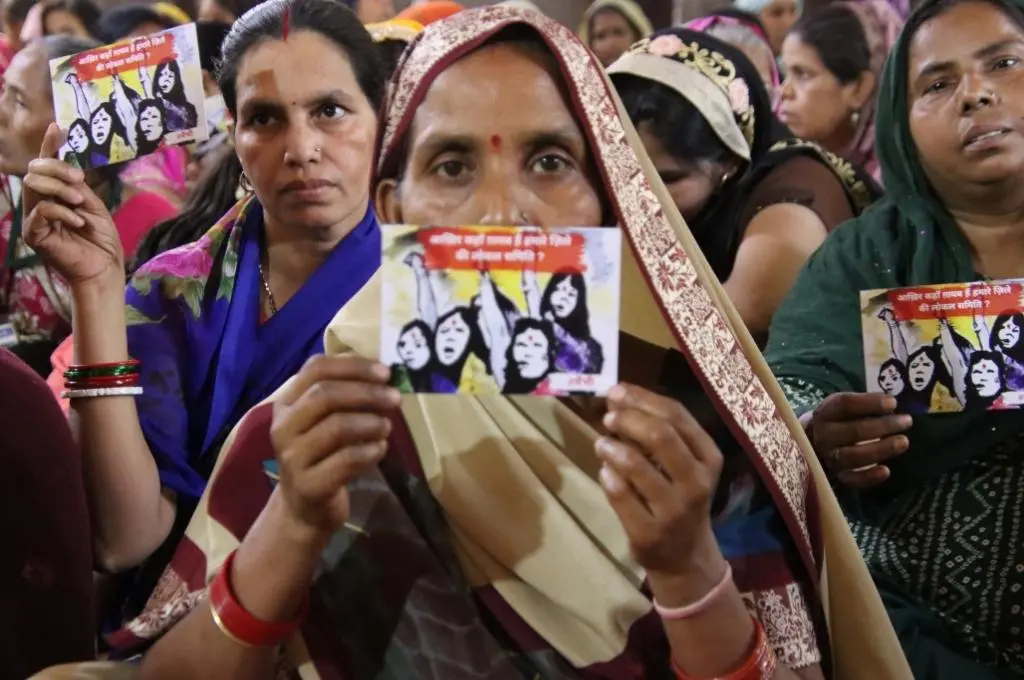How many women in India ‘work’? How is this work defined, and under what conditions is it performed? How do women enter the workforce, and when do they leave? These questions have drawn increased attention over the past several years.
National surveys and independent assessments by think tanks have attempted to measure women’s participation in paid work. These analyses have revealed a gradual increase in women’s presence in the workforce in recent years, marking the reversal of a decades-long overall decline in the female labour force participation rate (FLFPR). While the FLFPR had sunk to 17.5 percent in 2018, it crossed 35 percent by 2023.
However, these figures do not tell the whole story of where and under what circumstances women enter the economy. Women’s presence in the workforce is highly dependent on socio-economic factors such as education levels and household income. Prior to the pandemic, a subset of women who were the workforce were those with college degrees. One of the factors cited to understand low participation has been the lack of good and secure jobs that correspond to qualifications. Moreover, increases in participation from time to time have been due to economic distress rather than opportunity. Importantly, social norms around marriage and childcare continue to inform whether women are able to engage in paid work.
Women in India are predominantly employed in the informal sector, where protections such as minimum wage and workplace safety are often absent. Women also face higher levels of job insecurity, making them more vulnerable to changing labour market dynamics and global shocks. For instance, with the onset of the COVID-19 pandemic in 2020, approximately 70 percent of working women lost their jobs, compared to 35 of percent men.
This disparity underscores the need to look beyond aggregate numbers and examine the specific conditions shaping women’s participation in the workforce. Here are four frequently asked questions to better understand the status of women in India’s workforce and the factors influencing their economic participation.

1. What are the factors that influence women’s workforce participation?
In the post-pandemic context, economic distress and unemployment have been the major drivers of women’s increased entry into the workforce—with rural India accounting for the majority of this uptick. Moreover, there has been a substantial increase in the ‘self-employed’ or ‘own account’ category, which often includes women engaged in income-generating tasks as low-paid workers, or even unpaid workers in family enterprises.
While the pandemic led to a distress-driven increase in labour force participation, the period before it witnessed two specific groups of women exiting the workforce more rapidly: non-literate women, who were dropping out to continue their education, and postgraduates. The latter reflects the ‘leaking pipeline’, which describes women dropping out of the workforce as they move further along the career path.
This ‘leakage’ is driven by factors including the gendered expectations and burdens of marriage and childcare—or more broadly, care work—that are put on women. Women may find it more difficult to take job transfers or migrate. Their experience in the workforce also varies based on their socio-economic background—labour participation rates have been higher in marginalised groups, including among trans persons and Scheduled Tribe (ST) communities.
Meanwhile, agriculture, which has been the main source of livelihood for the bulk of the population, has undergone feminisation. Between 1981 and 2011, 45 million women were identified as cultivators or agricultural labourers. A disproportionate share of agricultural labourers has been women from Dalit and other historically marginalised communities.
Against the backdrop of agrarian distress, men have either shifted to non-farm employment or migrated out of rural areas in search of employment. However, women have not featured prominently in either trend. Male out-migration has placed additional burdens of work and debt on women, who not only have to take care of the household, and their piece of land if they have one, but also work as agricultural labourers.
Despite producing the majority of the country’s food, more than 87 percent of women who work on agricultural land do not own it. Without land titles, they are recognised as ‘cultivators’, not farmers, in official data. This means that women are unable to access government schemes, loans, and subsidies meant for farmers. In cases where targeted policies do exist for women farmers, budgetary allocations have historically remained low.
2. What role do social norms play in shaping women’s choices in the workforce?
Women’s participation in the workforce is shaped by social factors and gender norms, including limited decision-making power within the household. A survey of more than 6,000 women across 16 cities in India revealed that a majority of women still need to seek permission to pursue certain jobs, and that families prefer women to either work from home or set up small businesses.
One reason is that paid work is often considered a distraction from women’s primary responsibilities towards the home. Whether or not they are employed outside the house, women bear a disproportionate burden of unpaid care work, spending more than four hours a day on activities such as cooking and cleaning, without even accounting for the time spent on childcare, which is also considered a ‘woman’s job’.
Women’s work within the household is not accounted for in official statistics, including the FLFPR. Unpaid care work is also not counted as part of the country’s GDP, though one estimate suggests that its share stands at 7.5 percent.
Despite these barriers, women have continued to seek employment opportunities and vocational training. However, these too tend to be gendered, with women primarily learning skills such as sewing, tailoring, and beauty or cosmetic services. At the same time, some sectors, such as logistics, have seen increasing feminisation, especially in warehouses and shop floors.
In some cases, gendered notions of ‘appropriate’ work have also been codified into law. An analysis of more than 150 labour laws in India found that, across different states, women are excluded from working in certain industrial sectors and factories, including ones where the wages may be higher.
Gender norms and caste have also played an exclusionary role in sectors such as agriculture, where women’s access to land has been a struggle for not only legal but also social recognition. Patriarchal biases and inheritance customs have excluded women from land ownership.

3. How do informal employment conditions affect women’s economic security in India?
Restrictions on women’s work that are based on paternalistic and patriarchal attitudes are often couched in the language of ensuring women’s safety. By extension, then, private entities think of women as a ‘liability’, for whom additional provisions may need to be put in place.
With the expansion of the gig economy, contract-based employment arrangements mimic informal employment conditions. As a result, women workers have found it increasingly difficult to access mechanisms such as sexual harassment policies or even general workplace safety guidelines. The onus of ensuring one’s security essentially falls on the worker and may determine the kind of jobs they are able to pursue, as well as their overall sense of economic security.
Making workplaces truly safe—whether by making sure that workers are equipped with adequate safety gear or addressing instances of discrimination or harassment—requires the operationalisation of existing legal protections as well as policies that are accessible regardless of employment status.
Informal conditions of employment and gendered norms around care work can reinforce each other—making women’s economic status more precarious even if they are employed in the formal sector. For instance, despite performing critical public health functions, ASHA workers are deemed ‘volunteers’ and denied rights and entitlements such as wages, social security, and safety otherwise guaranteed to formal workers.
Employment-related vulnerability is also experienced more acutely by women with intersecting experiences of marginalisation, including on the basis of caste and religion; economic precarity is exacerbated by systemic exclusion and discrimination. For instance, with the onset of the COVID-19 pandemic, Muslim women were targeted by misinformation and hate campaigns, and those who were migrants and domestic workers faced increased scrutiny and abuse in the absence of labour protections. Muslim families residing in low-income neighbourhoods faced indiscriminate home demolitions in the name of ‘anti-encroachment’, which also caused sudden income loss.
4. What gender-based disparities do women face in access to credit and entrepreneurship opportunities?
Women own or lead approximately one-fifth of micro, small, and medium enterprises (MSMEs) in India. They tend to be concentrated in the category of very small-scale entrepreneurs, with annual turnovers of less an INR 3 lakh. Women face varied, systemic barriers to entrepreneurship, including limited access to markets and networks and gaps in formal training and skills. Importantly, gender inequality persists in access to technology and digital skills, making it more difficult for women entrepreneurs to fully participate in emerging economic avenues such as e-commerce.
Moreover, despite being as ‘productive’ as men in terms of generating profits, women’s access to credit is much lower in comparison. This access is determined by several factors, including differences based on the type of industry, social norms and perceptions, and technical know-how such as business planning or documentation. Women may also not be in a position to accumulate wealth or own assets, making them less likely to get loans from formal financial institutions. This largely limits their access to capital to joint-liability groups—with members deemed as each other’s co-collateral—or microfinance loans underwritten by male relatives, which often carry very high interest rates. As such, not only does the banking ecosystem tend to treat women as inherently unreliable or ‘high-risk’ borrowers, but there is also a more general mindset to restrict credit for women.
Women from marginalised communities also face compounded barriers when it comes to entrepreneurship opportunities. Caste- and community-based networks determine an individual’s access to finance and capital, or even a safety net.
Improving women’s working lives
Women’s participation in the workforce is shaped by a complex interplay of factors, including economic distress, precarious employment conditions, entrenched societal norms, and systemic barriers to credit and land ownership. These nuances are often absent from macro-level economic calculations.
While recent data points to a rise in the FLFPR, this increase is largely driven by necessity, particularly in rural areas and among marginalised communities. Moreover, much of this work remains informal, low-paid, or unrecognised, and women continue to bear a disproportionate burden of unpaid care responsibilities alongside paid labour.
At the same time, women face persistent disparities in access to resources, opportunities, and protections—whether as farmers, informal workers, or entrepreneurs. Legal and policy frameworks often reflect and reinforce social biases, limiting women’s autonomy and economic security.
Improving women’s working lives can include immediate policy steps such as provisions for housing, childcare, and migration support. At a broader level, it requires rethinking how we measure progress. When success is measured purely in numbers, efforts to boost women’s workforce participation may end up reproducing gendered norms, rather than dismantling the barriers that keep women out of more diverse and secure roles.
Addressing these challenges requires moving beyond examining participation rates—turning our attention instead to the quality of work, the conditions under which it is performed, and the broader structural constraints that shape women’s choices.
For more insights and further reading, explore IDR’s coverage of gender, rights, and livelihoods.
—





